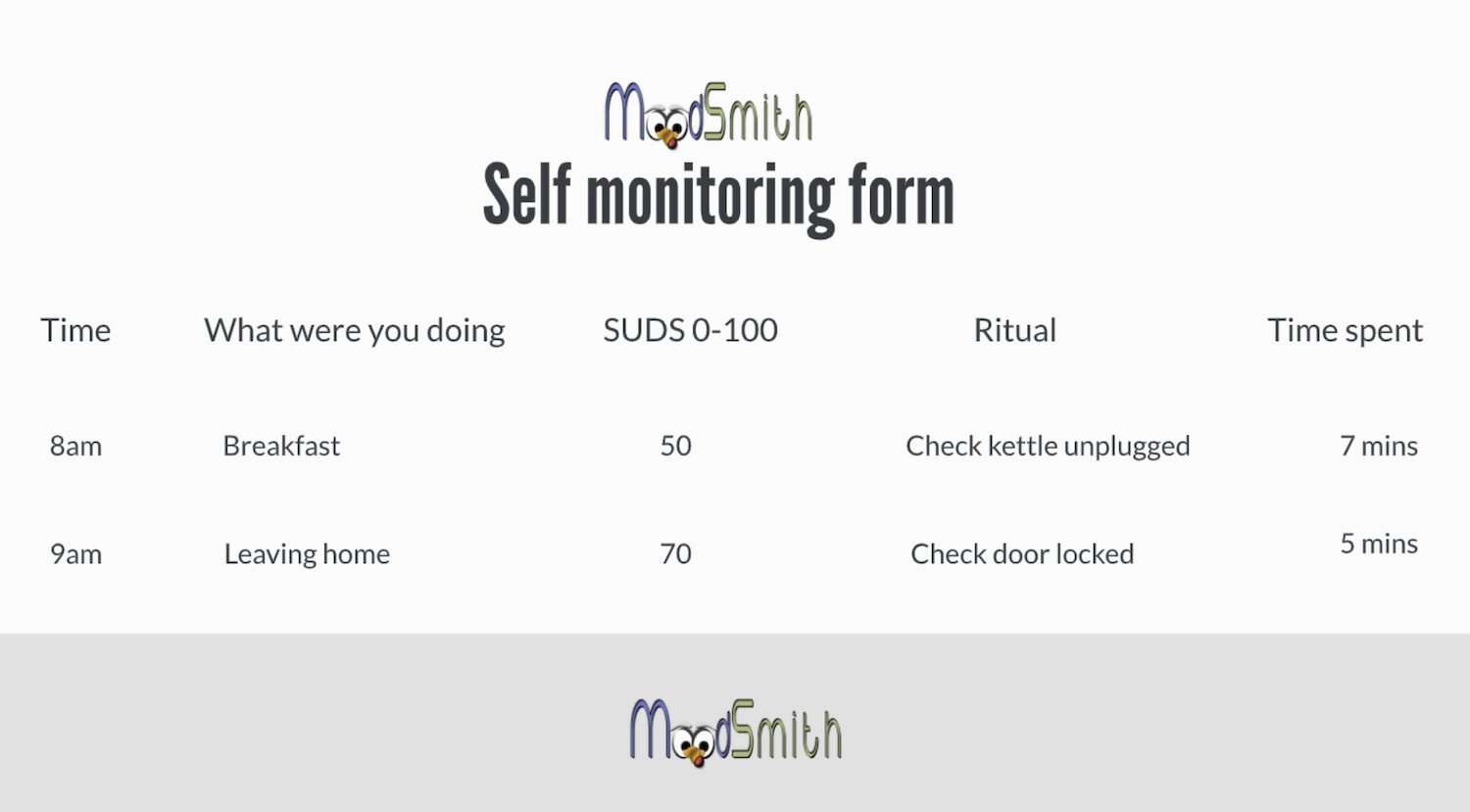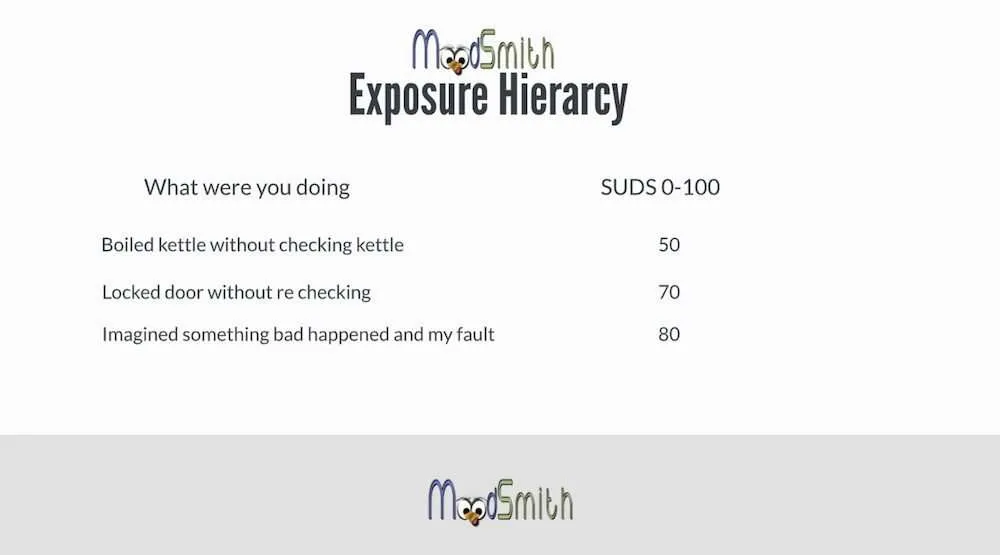What is Exposure and Response Prevention (ERP)?
Exposure and Response Prevention, commonly abbreviated as ERP, is a type of behavioural therapy designed specifically to treat Obsessive-Compulsive Disorder (OCD). ERP helps individuals confront their fears (exposures) and resist the urge to perform compulsive behaviours (response prevention). This two-pronged approach aims to break the cycle of obsessions and compulsions, allowing individuals to regain control over their lives.
According to the National Institute for Health and Care Excellence (NICE)1, ERP is a first-line treatment for OCD and is widely recognised as an evidence-based approach for managing the disorder.
ERP is regarded as the gold standard treatment for OCD because it directly addresses the root mechanisms of the disorder. OCD thrives on a vicious cycle: intrusive thoughts cause anxiety, and compulsive behaviours temporarily reduce that anxiety. However, these behaviours reinforce the obsession, making it more likely to recur. ERP breaks this cycle by gradually exposing individuals to their fears and helping them resist compulsions.
For example, if someone with OCD fears contamination, ERP would involve exposing them to a feared contaminant, like touching a doorknob, without allowing them to wash their hands. Over time, they learn that the anxiety diminishes on its own, even without performing the compulsion. This process is backed by extensive research, as noted by the IOCDF2 .
How ERP Works: The Science Behind It
ERP is based on two key learning processes: habituation and extinction.
What is habituation?
When you habituate to something, you get used to it or adapt to it. Someone who has just started living beside a railway line cannot sleep at night until they get used to the trains’ noise, their brains adapt, and they habituate and sleep through the night.
If you have OCD and wish to start ERP therapy, one thing that shall happen during treatment is that you shall habituate to your obsessions. You get used to and adapt to the thoughts in your head that are causing you so much distress.
During habituation, your anxiety response weakens. This anxiety reduction is essential if you wish to recover from the unwanted thoughts in OCD, as the unwarranted fear leads to avoidance and gives you the urge to carry out a compulsion. If you did not feel fear concerning your intrusive thoughts, you would not need to ritualise. Ritualise is another word for your compulsions.
As the IOCDF explains3, this dual process of habituation and extinction is foundational to ERP’s success
Stop Intrusive Thoughts

Online course to help manage intrusive thoughts
What is extinction?
The term extinction refers to reducing behaviours, such as compulsions or rituals previously learned by association with your feared obsessions.
To fully grasp why extinction is a necessary part of ERP, it helps to understand how compulsive behaviours develop in the first instance.
Consequences shape behaviour, and they can be both good and bad. You go to work every week for 40 years of your life, as the consequences of receiving a salary each month reinforce you to go to work. Money in your bank account is an example of a positive reinforcer. Getting told you did a good job and a bonus are positive reinforcers.
Reinforcers can give you something good, such as pleasure or take away something you did not like.
Extinction occurs when your reinforcer no longer removes discomfort or gives you something pleasurable. This concept is foundational to ERP’s success, as highlighted by the International OCD Foundation (IOCDF)4, which underscores the importance of breaking the cycle of obsessions and compulsions to achieve long-term symptom relief.. You might not go to work every day if you no longer receive the reinforcer of a salary.
Going back several times to check that you had locked the door works as a reinforcer, as the anxiety you experienced when the doubt kicked in was taken away when you double-checked the door.
All the urges you experience when compelled to carry out a ritual are because of reinforcement; that is, they take away doubt and discomfort. Checking, washing, repeating things in your head, analysing, seeking reassurance and other behaviours act as reinforcers for your obsessions in that they reduce your anxiety or worry for a short time. The compulsions are rewarding as they reduce your stress, and you, therefore, repeat them.
ERP utilises operant conditioning; when you do not reward a behaviour, it becomes extinct and starts to disappear. The behaviour of going back to check you locked the door is rewarding as it lowers your anxiety and answers your doubt. Hence, you repeat this rewarding behaviour, and it becomes a compulsion. When you stop going back to check, you start to undo the rewarding behaviour of checking. Going back to check will become extinct, meaning that compulsion, the urge to check, will be gone as it is no longer rewarding.
You can break this cycle by refraining from carrying out your compulsions. Refraining is the response prevention part of Exposure and Response Prevention. Stopping the compulsions in a controlled way through ERP eliminates the reinforcement given to the obsession. It results in the extinction of previously rewarded behaviours.
Now that you understand how ERP works, this article shall focus on Exposure Response Prevention for yourself.
Important. When not to use ERP. If you have thoughts of harming yourself or others, you need to meet with a licensed mental health professional to help you with your obsessions.
Step-by-step Guide to ERP Therapy
Response prevention
The response prevention part of Exposure Response Prevention refers to stopping all your behaviours that soften the anxiety you experience from your obsessions. This process, as outlined by NICE Guidelines, is essential in reducing the reinforcement of compulsions and helps individuals habituate to their fears effectively. We talk about neutralising anxiety; people perform compulsions or rituals to decrease the stress they experience from their unwanted thoughts.
Response prevention is the self-controlled stopping of all compulsions. When you stop all rituals, you are allowing habituation to occur. I explained habituation at the beginning of this article; if you have forgotten, you habituate when you get used to something. If you block your compulsion to check if you locked a door, you will get used to not checking. Stopping compulsions allows for a cognitive change, where you form new, realistic appraisals of situations that previously were considered frightening.
When you decide to control and stop all compulsions, you decide that you shall have to experience some stress level and get used to it without allowing a ritual to make you feel safe momentarily. You will habituate. You will get used to it until you no longer feel anxiety.
In the following steps, you allow yourself to see that your worse fears did not happen when you stopped your compulsions.
- Self monitor for one week
You start by completing a self-monitoring form for one week or more if needed. This step is essential as the contents of this form are used to create your hierarchy of things that cause you discomfort, which you need for Step 2.
How to self-monitor
Each day record all compulsions, including mental rituals.
You shall keep a record of all your obsessions and compulsions for one week. These include mental compulsions.
- Create a hierarchy of things that cause distress
Create a hierarchy of things that cause you distress. You will need this record to begin your exposure exercises. This list will contain things that trigger your obsessions and compulsions.
Then rate the discomfort that you experience. You can use the Scale of Discomfort or SUDs for short. This scale goes from 0, where you do not have any discomfort, to 100, which is the highest distress level.
To create your hierarchy, you need to order your list from the least distressing to the most uncomfortable.
You can see an example of this hierarchy in the image below.
- Start your exposure
Start with the least distressing thing on your hierarchy and start confronting the situation without using compulsion.
Keep doing this until your anxiety has decreased by at least 50%
Starting exposure response prevention allows you to confront situations in a controlled way, choosing examples from the list you have created. Rather than carry out a compulsion, you can change how you respond to these situations. You will practice reducing and eliminating your compulsions when facing anxiety-provoking problems.
Try not to be nervous about starting exposure, as this is very different from what you have been experiencing with OCD. When you begin ERP, you have created a carefully planned list based on SUDS and are in control of where to start.
When choosing where to start from your list, choose something that will provoke mild anxiety. Possibly around the 50 mark. If you find that this is too difficult, start lower. Many clients I have worked with repeatedly were surprised that some exposure provoked little to no anxiety. If that happens to you, choose another item from your list.
You want to experience some mild anxiety because you want the opportunity to change how you habitually respond. You are also teaching your nervous system that this previously feared situation is ok. For example, if you are choosing to touch a doorknob. The more you practice, the less anxiety you will feel until your habitual reaction shall be no anxiety.
Small steps, if needed.
Don’t give up if you cannot carry out an exposure. Break it into smaller steps if need be. For example, if your exposure is to touch a handle without carrying out a compulsion. You can start by touching with just your fingertip or nail. Keep using this as your exposure until your anxiety is mild, and then try two fingers.
You want your anxiety to decrease by at least 50%, and your urges to escape the situation or to carry out your compulsion to reduce before moving on to the next item on your hierarchy.
Whether you undertake self-help or are working with a psychologist, it is essential that you can undertake self-exposure on your own, as this is all practice-based.
The aim is to practice each exposure, one at a time, without compulsions until your anxiety decreases by at least 50%.
Imaginal Exposure
There are situations where it might be challenging to practice real-life exposures. For example, if you are afraid that you will shout something immoral in a place of worship, you can use imaginal exposure. This technique is supported by research from the IOCDF5, which details how imaginal exposure can address fears that are difficult to replicate in real-life scenarios
How does imaginal exposure work?
It follows the same principles discussed above for in vivo exposure, only now you use your imagination for the exposure rather than real life.
When to Use Imaginal Exposure in ERP
Some fears are difficult to replicate in real life. For example, a person might fear shouting something inappropriate in a place of worship. In such cases, imaginal exposure can be an effective tool. This involves vividly imagining the feared scenario and sitting with the resulting anxiety without performing compulsions.
What happens when you do Exposure Response Prevention?
When you practice these behavioural experiments and do not perform compulsions, you will notice that your anxiety does not last very long. It will start to reduce without resorting to a ritual or using avoidance. Over time you will also notice that your urge to carry out compulsions decreases.
Without exposure, you deny yourself this opportunity.
Resources for Learning More About ERP
International OCD Foundation (IOCDF)
- https://www.nice.org.uk/guidance/cg31 ↩︎
- https://iocdf.org/about-ocd/treatment/erp/ ↩︎
- https://iocdf.org/expert-opinions/the-inhibitory-learning-approach-to-exposure-and-response-prevention/ ↩︎
- https://iocdf.org/expert-opinions/the-inhibitory-learning-approach-to-exposure-and-response-prevention/ ↩︎
- https://iocdf.org/about-ocd/treatment/erp/ ↩︎


